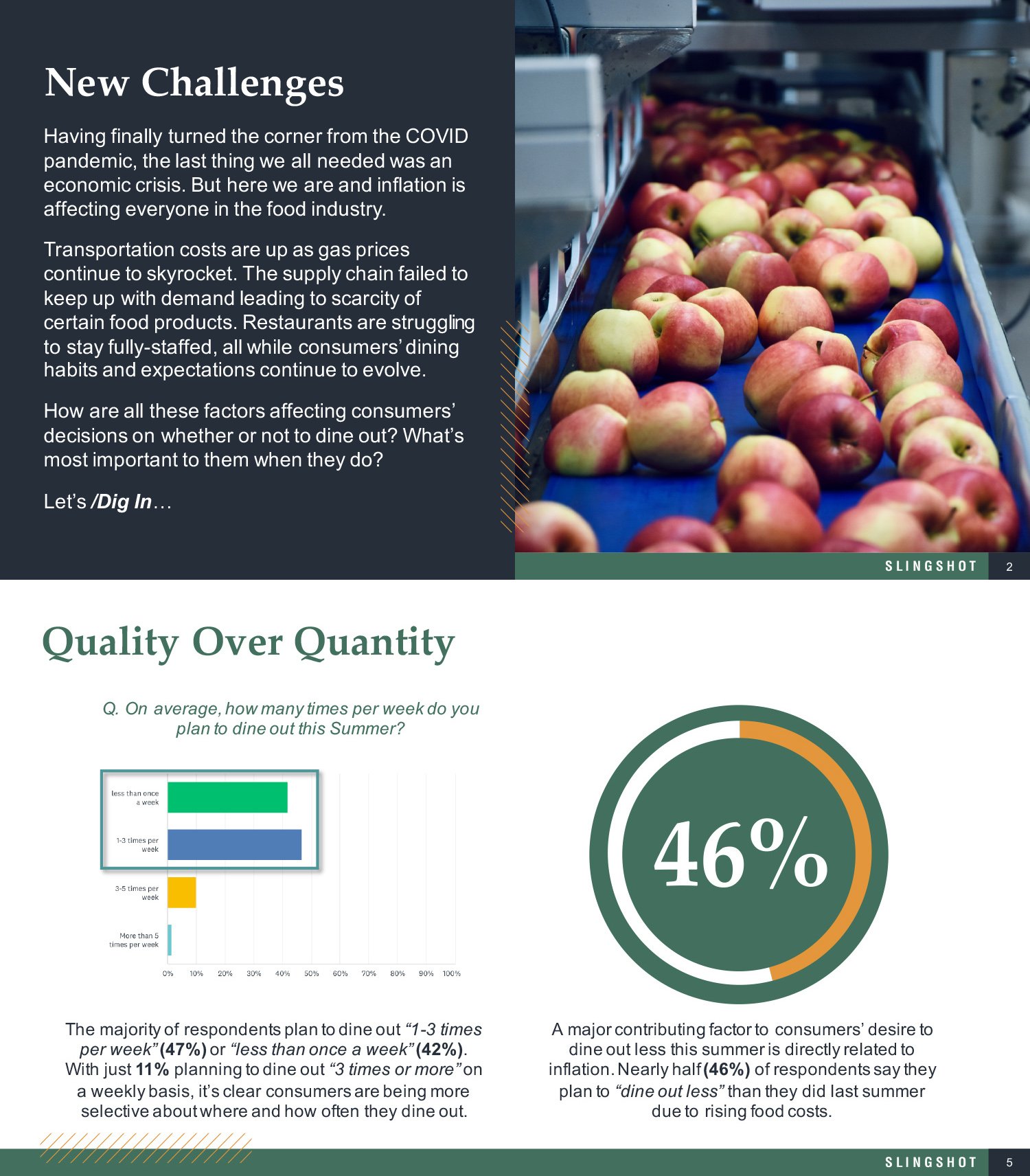Having finally turned the corner from the COVID pandemic, the last thing we all needed was an economic crisis. But here we are and inflation is affecting everyone in the food industry. Transportation costs are up. The supply chain failed. Restaurants are struggling to stay fully -staffed, all while consumers’ dining habits and expectations continue to evolve.
How are all these factors affecting consumers’ decisions on whether or not to dine out? What’s most important to them when they do?

Whether it be the colder weather, frequent family gatherings, or the nostalgic memories that accompany the holiday season, there’s always one thing that makes us all feel good this time of year and that’s great food.
But feeling good in 2022 is about more than just the food we put in our mouth. It’s a return to a healthier lifestyle as we all continue to struggle with the lingering stress and anxiety of the prolonged global pandemic.
The return of Fall means back to school for many, but the prospect of life returning back to “normal” seems as distant as ever as concerns over the delta variant continue to rise. Millions of Americans made up for lost time dining out during the Summer months, but attitudes seem to have now shifted again as parents are faced with more variables when deciding whether to dine out or eat at home.
Who’s hungry? With millions of Americans armed with vaccinations and an economy on the upswing, diners are becoming more comfortable eating out. This summer showcases a promising increase in demand in the food sector, expanding over multiple categories ranging from restaurants to packaged goods. However, the sector is being held back by an extreme labor shortage that’s having a real impact on its ability to meet demand.
Bring on the diners. What a difference three months (and over 100 million vaccinations) can make. On the heels of a slow winter for restaurant brands, Americans seem poised to start dining out again in droves. An improving economy and reduced COVID anxiety is driving demand across multiple categories, and food-related brands from restaurants to packaged goods all stand to benefit.
What does the casual dining market look like heading into the new year?
A late-year resurgence in COVID-19 cases, plus a depressed service economy, have combined to create a 1-2 punch that’s likely to continue having a negative effect on restaurant brands as we enter the New Year. Conversely, packaged goods and food brands will continue to reap the rewards of a shift to more at-home dining.
In this first edition of Slingshot’s Everyday Dining Forecast, we explore how consumer attitudes and behaviors around food and dining are expected to shift as we transition from summer to fall. Will they choose to eat out or at home? What factors will keep them from cooking or dining out more often? And what are the tastes and preferences that will drive their food purchase behavior?